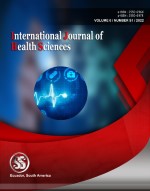Forensic point of view on proving virginity
A comparative study among a sample of the Egyptian population
Keywords:
virginity, elastic hymen, less bleeding, severe bleedingAbstract
Aim: Chastity is a moral virtue, whereas virginity is a physiological state indicated, but not conclusively, by an intact hymen. Sometimes, the post-pubertal hymen can be elastic, and hence some sexually active women were found to have intact hymens. Therefore, the absence of any hymen injuries should be used to rule out the possibility that the adolescent has experienced vaginal penetration. Consequently, a false virgin may claim to be a true virgin. Objectives: The current study aims to establish medico-legal aspects concerning proving virginity among Egyptian candidates. Subjects & Methods: A comparative study of two examined groups of married females coming to private section during the first week after the wedding. One group complained of bleeding, and the other complained of severe bleeding with the first intercourse, discussing the types of hymens found, medico-legal and ethical concerns regarding virginity concepts, and their husbands' feelings and attitudes. Results: The results revealed that of 189 women examined for bleeding with the first intercourse, 82.5% of them were found to have an annular elastic hymen. Only 15.8 % of 114 cases examined for severe bleeding during the first intercourse had a deflorated hymen, and the rest had an elastic hymen.
Downloads
References
Colombo A. Michel Foucault, Histoire de la sexualité. IV: Les aveux de la chair. PhaenEx. 2019;13(1):116–25.
Beale H, Fauvarque-Cosson B, Rutgers J, Vogenauer S. Cases, materials and text on contract law. Bloomsbury Publishing; 2019.
Payton J. “Honor,” collectivity, and agnation: emerging risk factors in “honor”-based violence. J Interpers Violence. 2014;29(16):2863–83.
Hegazy AA, Al-Rukban MO. Hymen: facts and conceptions. Health (Irvine Calif). 2012;3(4):109–15.
Goodman MP. Psychosexual issues. Female Genit Plast Cosmet Surg. 2016;200.
Robatjazi M, Simbar M, Nahidi F, Gharehdaghi J, Emamhadi M, Vedadhir A-A, et al. Virginity testing beyond a medical examination. Glob J Health Sci. 2016;8(7):152.
Ghasemi V, Simbar M, Ozgoli G, Nabavi SM, Majd HA. Prevalence, dimensions, and predictor factors of sexual dysfunction in women of Iran Multiple Sclerosis Society: A cross-sectional study. Neurol Sci. 2020;41(5):1105–13.
Ossman AME, El-Masry YI, El-Namoury MM, Sarsik SM. Spontaneous reformation of imperforate hymen after repeated hymenectomy. J Pediatr Adolesc Gynecol. 2016;29(5):e63–5.
Shariati M, Mohabbati H, Rajinia K. A survey of midwives’ knowledge and attitude towards gynecologic laws and regulations. Heal Spiritual Med Ethics. 2014;1(4):10–5.
Dialmy A. Sexuality and Islam. Eur J Contracept Reprod Heal Care. 2010;15(3):160–8.
Van Moorst BR, van Lunsen RHW, van Dijken DKE, Salvatore CM. Backgrounds of women applying for hymen reconstruction, the effects of counselling on myths and misunderstandings about virginity, and the results of hymen reconstruction. Eur J Contracept Reprod Heal Care. 2012;17(2):93–105.
Published
How to Cite
Issue
Section
Copyright (c) 2022 International journal of health sciences

This work is licensed under a Creative Commons Attribution-NonCommercial-NoDerivatives 4.0 International License.
Articles published in the International Journal of Health Sciences (IJHS) are available under Creative Commons Attribution Non-Commercial No Derivatives Licence (CC BY-NC-ND 4.0). Authors retain copyright in their work and grant IJHS right of first publication under CC BY-NC-ND 4.0. Users have the right to read, download, copy, distribute, print, search, or link to the full texts of articles in this journal, and to use them for any other lawful purpose.
Articles published in IJHS can be copied, communicated and shared in their published form for non-commercial purposes provided full attribution is given to the author and the journal. Authors are able to enter into separate, additional contractual arrangements for the non-exclusive distribution of the journal's published version of the work (e.g., post it to an institutional repository or publish it in a book), with an acknowledgment of its initial publication in this journal.
This copyright notice applies to articles published in IJHS volumes 4 onwards. Please read about the copyright notices for previous volumes under Journal History.
















